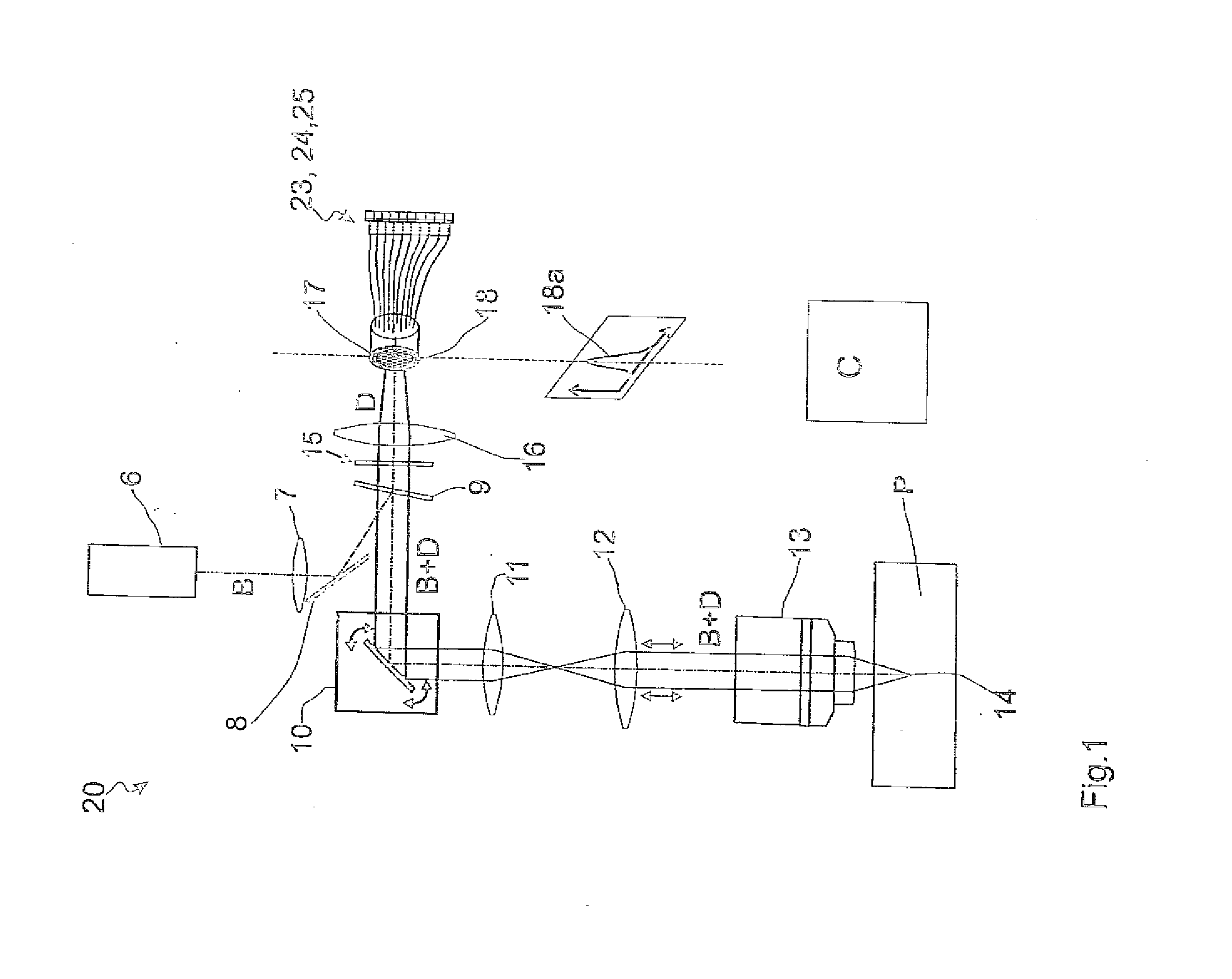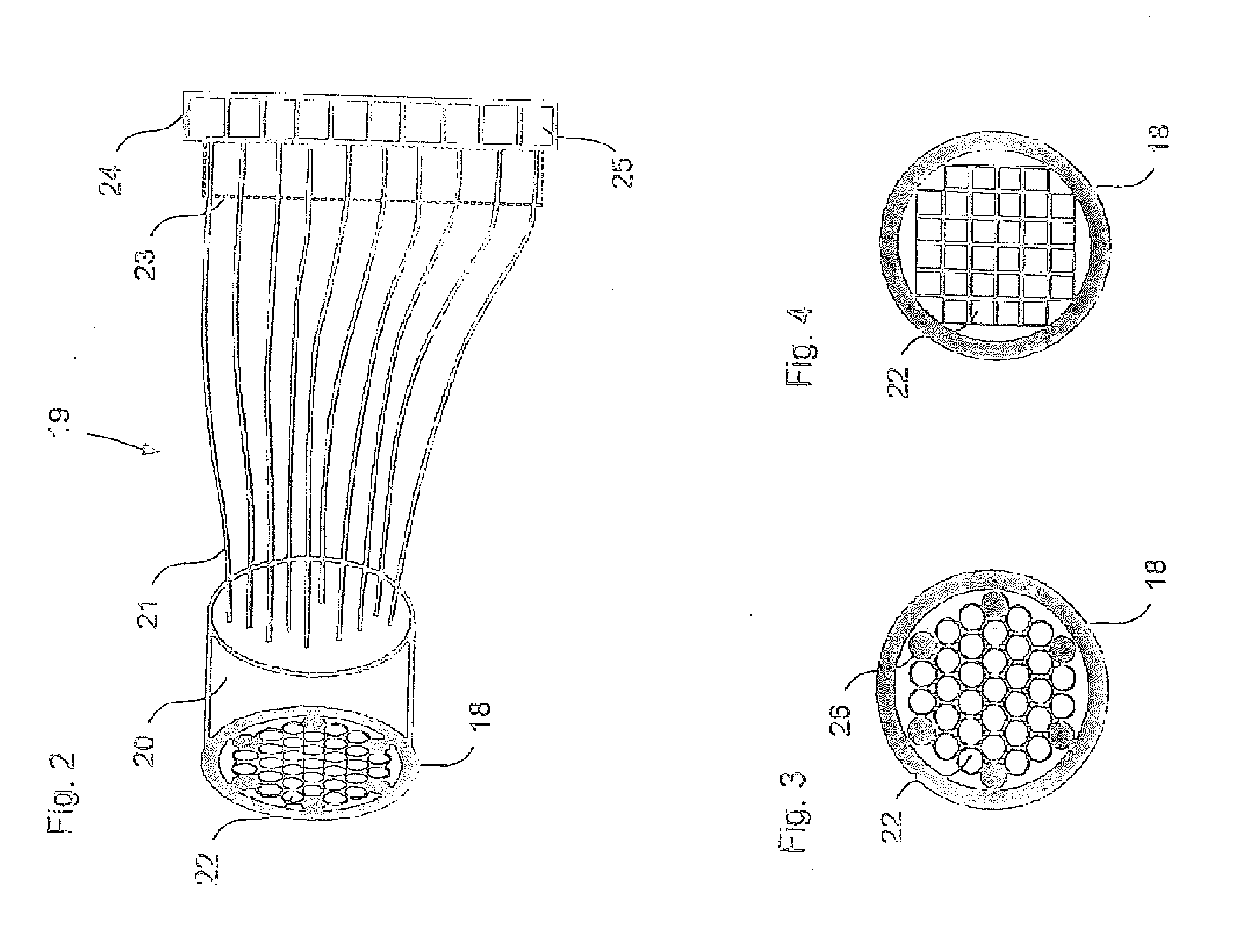High-resolution scanning microscopy
a scanning microscopy and high-resolution technology, applied in the field of high-resolution scanning microscopy microscopy microscopes, can solve the problems of unable to reach the theoretical maximum by an error of 20%, and the pixels of the detector array can additionally be too large for the required resolution, so as to reduce and/or completely eliminate residual inaccuracy, high precision, and high resolution
- Summary
- Abstract
- Description
- Claims
- Application Information
AI Technical Summary
Benefits of technology
Problems solved by technology
Method used
Image
Examples
Embodiment Construction
[0065]FIG. 1 schematically shows a laser scanning microscope 1 which is designed for the purpose of microscopy of a sample 2. The laser scanning microscope (abbreviated below as LSM) 1 is controlled by a control device C and comprises an illumination beam path 3 and an imaging beam path 4. The illumination beam path illuminates a spot in the sample 2, and the imaging beam path 4 images this spot, subject to the diffraction limit, for the purpose of detection. The illumination beam path 3 and the imaging beam path 4 share a plurality of elements. However, this is likewise less necessary than a scanned spot illumination of the sample 2. The same could also be illuminated in wide-field.
[0066]The illumination of the sample 2 in the LSM 1 is carried out by means of a laser beam 5 which is coupled into a mirror 8 via a deflection mirror 6, which is not specifically functionally necessary, and a lens 7. The mirror 8 functions so that the laser beam 5 falls on an emission filter 9 at a refl...
PUM
 Login to View More
Login to View More Abstract
Description
Claims
Application Information
 Login to View More
Login to View More - R&D
- Intellectual Property
- Life Sciences
- Materials
- Tech Scout
- Unparalleled Data Quality
- Higher Quality Content
- 60% Fewer Hallucinations
Browse by: Latest US Patents, China's latest patents, Technical Efficacy Thesaurus, Application Domain, Technology Topic, Popular Technical Reports.
© 2025 PatSnap. All rights reserved.Legal|Privacy policy|Modern Slavery Act Transparency Statement|Sitemap|About US| Contact US: help@patsnap.com



